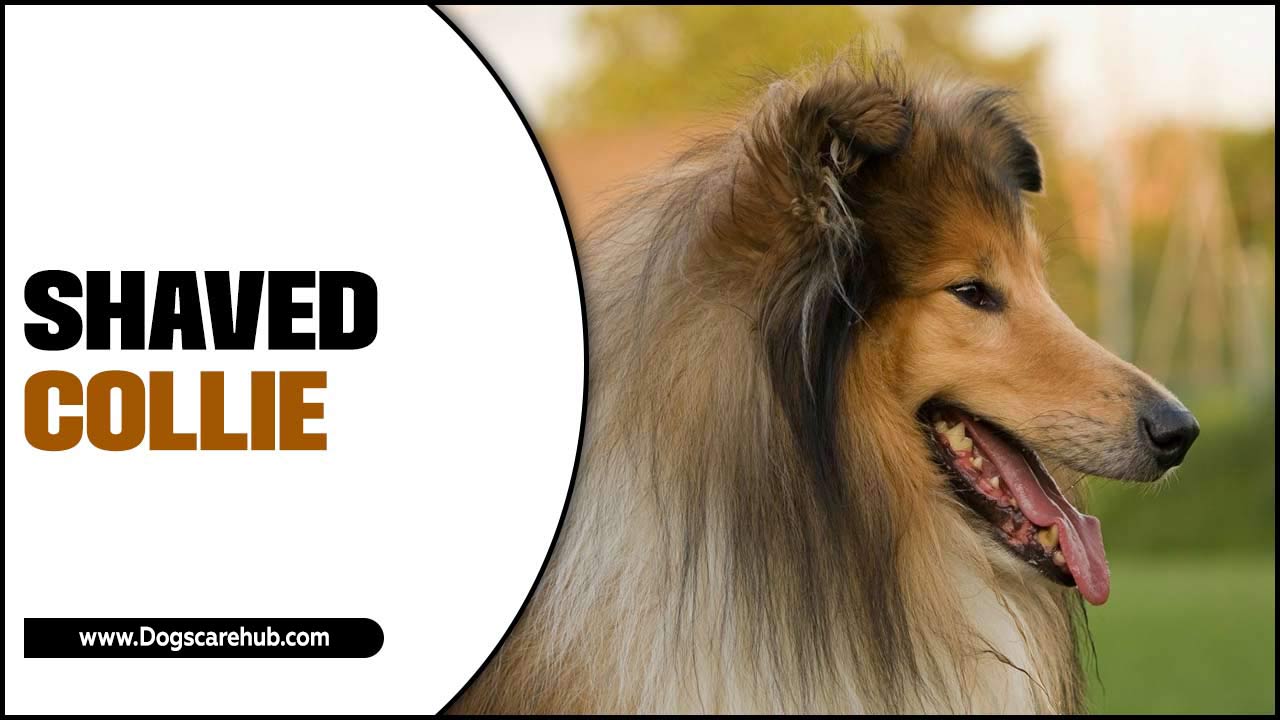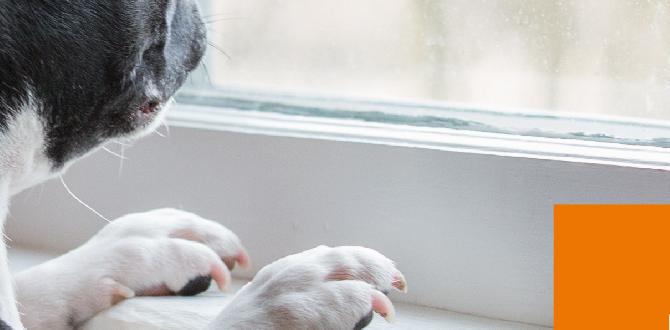Calm Aggressive Dog in Older Dogs: Proven Solutions
Facing aggression in an older dog can be concerning, but it’s often manageable. This guide offers practical, gentle strategies to help reduce aggressive behaviors in senior dogs, focusing on understanding the underlying causes and implementing effective, compassionate solutions. You’ll learn how to identify triggers, make environmental adjustments, and utilize positive training techniques to foster a calmer, happier companion.
It can be heartwarming to see our canine companions gracefully age, enjoying their golden years. However, sometimes their behavior changes, and we might notice them becoming more irritable or reactive – exhibiting aggression when they never did before. This can be a distressing experience for any devoted pet parent, leaving you feeling helpless or confused. But take heart! You’re not alone, and there are many effective, kind ways to help your senior dog feel more at ease and less aggressively inclined.
This article is designed to walk you through understanding why senior dogs might show aggression and, more importantly, what proven solutions you can implement right away. We’ll explore the common reasons behind these behavioral shifts and provide clear, actionable steps to help create a more peaceful environment for both you and your beloved older dog.
Understanding Aggression in Senior Dogs
Seeing your once-gentle older dog snap, growl, or show signs of aggression can be quite alarming. It’s easy to feel discouraged, but it’s important to remember that this behavior is usually a symptom of something else going on. Unlike younger dogs whose aggression might stem from excitement or lack of training, aggression in senior dogs often has a more specific root cause.
As dogs age, they can experience a variety of physical and cognitive changes that impact their temperament and reactions. These can include:
- Pain and Discomfort: Arthritis, dental issues, or other chronic pain conditions can make a dog more sensitive and irritable. Even a gentle touch might be painful, leading them to react aggressively to avoid further discomfort.
- Sensory Decline: Vision and hearing loss are common in older dogs. They might not see or hear someone approach, leading to a startle response that can manifest as aggression.
- Cognitive Dysfunction Syndrome (CDS): Similar to dementia in humans, CDS can affect a dog’s brain, leading to confusion, anxiety, irritability, and changes in behavior, including aggression.
- Underlying Medical Conditions: Hormonal imbalances, neurological disorders, or other illnesses can also contribute to temperament changes and aggressive outbursts.
- Environmental Stressors: Changes in the household, new pets, loud noises, or a lack of safe, quiet spaces can exacerbate existing sensitivities in older dogs.
- Past Experiences: A dog’s history of neglect, abuse, or negative encounters can resurface or intensify with age and reduced coping abilities.
The first and most crucial step in addressing aggression in an older dog is a thorough veterinary examination. This will help rule out or identify any underlying medical conditions contributing to the behavior. Your veterinarian can perform a physical exam, blood work, and discuss your dog’s symptoms to pinpoint any health-related causes.
You can find more information on recognizing and managing pain in senior dogs from the American Veterinary Medical Association (AVMA) here: AVMA Senior Pet Care.
Identifying Aggression Triggers in Senior Dogs
Once medical issues are addressed or ruled out, the next step is to become a detective and figure out what specifically sets your senior dog off. Aggression isn’t usually random; it’s a reaction to something your dog perceives as a threat, an annoyance, or a source of pain.
Observe your dog closely in different situations. Keep a journal to track:
- When the aggression occurs: Is it during petting, when someone approaches their food bowl, or when a new person or pet enters the home?
- What was happening just before: Were they sleeping, eating, or being approached?
- The type of aggression: Is it a growl, a snarl, a snap, or a full bite?
- The body language: Look for wrinkled noses, bared teeth, stiff bodies, whale eye (showing the whites of their eyes), pinned ears, or tucked tails. These are all warning signs.
- The environment: Was it noisy, crowded, or unfamiliar?
Common triggers for aggression in older dogs often include:
- Handling: Being touched in sensitive areas (ears, paws, tail), or being touched while sleeping or eating.
- Close Proximity: Dogs approaching them quickly, standing over them, or cornering them.
- Resource Guarding: Protecting their food, toys, bedding, or even a favorite person.
- Startle Response: Being woken up suddenly or not hearing someone approach due to hearing loss.
- Unfamiliar People or Dogs: Feeling uncertain or threatened by strangers.
- Excessive Stimulation: Overstimulation from too much noise, activity, or interaction.
Understanding these triggers is key to preventing aggressive incidents. By identifying them, you can begin to manage your dog’s environment and interactions to minimize stress and promote their well-being.
Proven Solutions for Calming Aggressive Senior Dogs
Once you have a clearer picture of your dog’s triggers and have ruled out medical causes, it’s time to implement strategies to help calm their aggressive tendencies. Patience and consistency are vital. Remember, you’re working with a senior dog who may have ingrained habits or new physical limitations.
1. Environmental Management and Prevention
The easiest way to prevent aggression is to avoid situations that trigger it. This involves making your home a safe and predictable space for your senior dog.
- Create a Safe Zone: Designate a quiet, comfortable area where your dog can retreat and be undisturbed. This could be a dog bed in a low-traffic part of the house, a crate with a cozy blanket, or even a separate room. Ensure this space is respected by everyone in the household, including children and other pets.
- Manage Resources: If your dog guards food, toys, or resting spots, manage these resources carefully. Feed them in their safe zone and remove food bowls once they are done. Supervise play with toys and retrieve them gently when playtime is over.
- Prevent Startles: For dogs with hearing loss, make your presence known before you get too close. You can stomp lightly on the floor to create vibrations they can feel, or announce your arrival with a gentle clap or cough from a distance.
- Control Interactions: Do not force your dog into social situations they find stressful. If visitors make them anxious, allow them to stay in their safe zone. If other pets are a trigger, ensure they have separate spaces and feeding times.
- Minimize Noise: Use white noise machines or soft music to mask sudden loud noises that can startle or agitate your dog.
2. Positive Reinforcement and Training Techniques
While intense training sessions might not be suitable for all senior dogs, gentle, positive reinforcement can still be very effective in building confidence and modifying behavior.
- Counter-Conditioning and Desensitization: This involves gradually exposing your dog to triggers at a low intensity while pairing the experience with something positive, like high-value treats or praise. For example, if your dog growls when someone walks past the window, start by rewarding them for remaining calm when the trigger is very distant (e.g., far down the street). Gradually decrease the distance as they show comfort. If this seems too complex, consult a certified professional dog trainer or veterinary behaviorist.
- “Look At That” Game: Teach your dog to look at a trigger (like a person walking by at a distance) and then look back at you for a treat. This helps them associate the trigger with good things.
- Gentle Handling: Practice calm, gentle petting, especially around areas they might be sensitive to. Always watch for their body language and stop if they show any signs of discomfort. Reward them for allowing gentle touch.
- Recall Training: A reliable recall is always useful. Practice calling your dog to you using only positive rewards, especially if you need to move them away from a potentially stressful situation.
It’s crucial to avoid punishment-based training methods, as these can increase anxiety and aggression. For instance, yelling at or physically correcting a dog who growls will only suppress the warning sign without addressing the underlying fear or pain, potentially leading to a bite without warning in the future.
3. Enrichment and Stress Reduction
A dog who is mentally and physically fulfilled is generally a calmer dog.
- Gentle Exercise: Continue with appropriate, low-impact exercise. Shorter, more frequent walks, swimming, or gentle play can help maintain physical health and tire them out pleasantly. Always adapt exercise to your dog’s physical capabilities.
- Mental Stimulation: Puzzle toys, snuffle mats, or simple obedience cues can provide mental engagement without overexertion. Even short bursts of activity can be beneficial.
- Calming Aids: There are several aids that can help reduce anxiety and promote calmness. These include:
- Pheromone Diffusers/Collars: Products like Adaptil mimic natural canine pheromones that can have a calming effect.
- Supplements: Certain supplements, such as L-theanine, melatonin, or those containing calming herbs, might be beneficial. Always consult your veterinarian before giving any supplements to your dog.
- Calming Music: Specialized music for dogs has been shown to reduce stress in kennel environments.
- Massage and Gentle Grooming: If your dog enjoys it, regular, gentle massage can help relax tense muscles and provide comfort.
A good resource for understanding canine body language, which is essential for stress reduction, is the website of the American Society for the Prevention of Cruelty to Animals (ASPCA): ASPCA Aggression Information.
4. Nutritional Considerations
What we feed our dogs can have an impact on their mood and overall health. While not a direct cure for aggression, a balanced diet supports overall well-being, which can indirectly help manage behavior.
- High-Quality Senior Food: Ensure your dog is on a diet appropriate for seniors, often with adjusted calorie counts and added joint support like glucosamine and chondroitin.
- Omega-3 Fatty Acids: These can help reduce inflammation and may have benefits for cognitive health. Foods rich in omega-3s, such as fish oil supplements (after vet consultation), can be beneficial.
- Digestive Health: A healthy gut can impact mood. Probiotic supplements can support gut health.
Always discuss dietary changes or supplements with your veterinarian to ensure they are appropriate for your dog’s specific health needs and won’t interfere with any existing medical conditions or medications.
When to Seek Professional Help
While these strategies can be very effective, sometimes professional guidance is necessary. If aggression is severe, dangerous, or if you’re not seeing improvement, don’t hesitate to reach out:
- Veterinarian: As mentioned, your vet is the first point of contact to rule out medical causes.
- Certified Applied Animal Behaviorist (CAAB) or Veterinary Behaviorist (DACVB): These professionals have advanced degrees and specialized training in animal behavior and can diagnose and treat complex behavioral issues, including aggression, often working closely with your veterinarian or by providing a veterinary diagnosis themselves.
- Certified Professional Dog Trainer (CPDT-KA or CPDT-KSA): Look for trainers experienced with aggressive dogs and senior dogs. They can help with behavior modification plans using positive reinforcement techniques. Ensure they use force-free, humane methods.
Remember, seeking professional help is a sign of responsible pet ownership, not a failure. These experts can provide tailor-made solutions for your dog’s unique situation.
Making Life Easier for You and Your Senior Dog
Living with a senior dog who exhibits aggression can be challenging, but it doesn’t have to be overwhelming. By focusing on understanding the root causes, managing the environment, using gentle training methods, and ensuring their comfort and well-being, you can significantly improve their quality of life and reduce aggressive incidents.
Here’s a quick overview of how to approach the situation:
| Aspect | Key Actions | Notes |
|---|---|---|
| Veterinary Check-up | Rule out pain, illness, or cognitive changes. | Crucial first step. |
| Trigger Identification | Keep a behavior journal. Observe carefully. | Helps with targeted solutions. |
| Environmental Management | Create safe zones, manage resources, prevent startles. | Proactive prevention. |
| Positive Training | Counter-conditioning, gentle handling, positive reinforcement. | Builds trust and confidence. Avoid punishment. |
| Enrichment | Gentle exercise, mental stimulation, calming aids. | Supports overall well-being. |
| Professional Help | Consult vet, behaviorist, or trainer. | For severe cases or lack of progress. |
FAQ About Senior Dog Aggression
Q: Is aggression normal in older dogs?
A: While it’s not uncommon for older dogs to develop new behavioral challenges, aggression is not something to accept as “normal.” It’s usually a sign of an underlying issue like pain, discomfort, sensory decline, or cognitive changes that needs to be addressed.
Q: How quickly can I expect to see results when trying these solutions?
A: Patience is key. Depending on the cause and severity of the aggression, you might see subtle improvements within a few weeks. Significant changes can take months of consistent effort. Focus on consistent management and positive reinforcement rather than expecting instant fixes. Addressing underlying pain or medical issues with your vet can often lead to quicker improvements.
Q: Should I punish my dog for showing aggression?
A: Absolutely not. Punishing an aggressive dog, especially an older one, can suppress warning signs (like growling) without fixing the underlying issue. This can make the aggression more dangerous by removing cues, as the dog may then bite without warning. Positive, reward-based methods and managing the situation are much safer and more effective.
Q: Can Cognitive Dysfunction Syndrome (CDS) cause aggression in senior dogs?
A: Yes, CDS, often referred to as doggy dementia, can definitely lead to changes in behavior, including increased irritability, confusion, anxiety, and aggression. If you suspect CDS, it’s crucial to consult your veterinarian for diagnosis and management strategies, which may include medication and environmental support.
Q: How can I protect children and other pets from an aggressive senior dog?
A: The safest approach is strict management. This means ensuring the senior dog has a safe, separate space where they cannot be disturbed. Supervise all interactions, and do not allow children or other pets to approach the senior dog when they are sleeping, eating, or in their safe zone. If the aggression is severe or poses a significant risk, you may need to consider more drastic separation measures or consult with a professional behaviorist about the dog’s long-term safety and suitability for the home environment.
Q: Are there safe natural remedies for anxiety in senior dogs that might help reduce aggression?
A: Some owners find relief with natural remedies, but always discuss these with your veterinarian first to ensure they are safe and appropriate for your dog’s health status. Options that may help with anxiety include pheromone diffusers (like Adaptil), calming supplements containing ingredients like L-theanine or chamomile, and certain calming music. These are best used as part of a broader management and behavior modification plan.
Conclusion
Watching your aging canine companion navigate the challenges of their later years can be a tender journey. If aggression has emerged, it’s understandable to feel concern. However, by approaching the situation with knowledge, empathy, and patience, you can make a real difference. Remember to always begin with a visit to your veterinarian to rule out any underlying pain or medical conditions, as these are frequent culprits behind behavioral changes in senior dogs.
Once health is addressed, becoming a keen observer of your dog’s environment and interactions is paramount. By identifying specific triggers and implementing proactive management strategies – like creating safe havens, managing resources, and preventing startling situations – you can significantly reduce the likelihood of aggressive encounters. Complementing this with gentle, positive reinforcement techniques will help rebuild your dog’s confidence and strengthen your bond.
Don’t underestimate the power of a well-managed lifestyle, including appropriate gentle exercise, mental enrichment, and potentially calming aids (with veterinary approval), to promote overall well-being. And importantly, never hesitate to seek guidance from qualified veterinary professionals or certified behaviorists. They are invaluable resources for developing a tailored plan to help your senior dog live out their twilight years with peace and dignity. Your commitment to understanding and supporting your senior dog through these changes will ensure they remain your cherished companion for years to come.
Meet Elyse Colburn, the devoted canine companion and storyteller behind the enchanting world of “Tales, Tails, and Adventures Unleashed.” A passionate dog enthusiast with a heart full of paw prints, Elyse Colburn shares heartwarming tales and insightful adventures, celebrating the joy, loyalty, and endless antics that make every dog a true hero. Join Elyse Colburn on this tail-wagging journey, where every post is a love letter to our four-legged friends.





